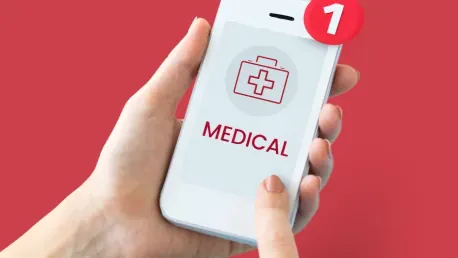The COVID-19 pandemic, coupled with social distancing protocols, drastically changed how we live and access essential services, including healthcare. During this challenging time, many people turned to digital platforms for their needs, driving the healthcare industry to adapt and evolve at a rapid pace.
1. Steps to Develop a Medicine Delivery App
Understand the Market and Define Your Goals
To create an effective medicine delivery app, start by analyzing the market to identify customer pain points, such as issues with medication availability or delivery delays. Define the primary goals for your app, whether it’s enhancing user experience, streamlining pharmacy operations, or improving delivery efficiency. Clear objectives help ensure your app addresses user needs effectively.
Define Key Features
Identify and integrate features that cater to various stakeholders, including customers, pharmacists, and administrators. Key features for users might include prescription uploads, order tracking, and secure payment options. For pharmacists, inventory management is crucial, while the admin panel needs tools for reporting, user management, and app analytics.
Choose the Right Technology Stack
Select technologies that support scalability, security, and performance. Frameworks like React Native are suitable for cross-platform development, while secure cloud storage and robust API development are essential for data handling and payment gateway integration.
Develop a User-Friendly Design
Creating an intuitive and visually appealing interface is crucial. Simplify navigation and include clear call-to-action elements. Ensure features like medication search and prescription uploads are easily accessible to significantly enhance user satisfaction.
Ensure Regulatory Compliance
Compliance with regulations such as HIPAA and GDPR is non-negotiable for medicine delivery apps. Partner with legal advisors to ensure your app meets all regional healthcare and data privacy laws, thus building trust with your users.
Focus on App Development and Testing
Develop the app in phased iterations, starting with a Minimum Viable Product (MVP) to test core features. Adopt agile methodologies to incorporate user feedback and refine functionalities. Conduct comprehensive testing to eliminate bugs and optimize performance.
Launch and Market Your App
After thorough testing, launch your app on various app stores backed by a strategic marketing plan. Promote your app via social media, SEO efforts, and partnerships with local pharmacies. Regular updates and responsive customer feedback management are essential for maintaining relevance and user interest.
2. Essential Features to Develop a Medicine Delivery App
Customer Panel Features
A successful medicine delivery app must offer features like simplified user registration, prescription uploads, detailed medicine search filters, real-time order tracking, multiple payment options, medication reminders, and a comprehensive order history for user convenience.
Pharmacist Panel Features
Pharmacists need features for efficient inventory management, order confirmation and preparation, prescription verification, sales tracking, real-time notifications, delivery schedule coordination, and feedback management to ensure smooth operations.
Admin Panel Features
The admin panel should include user and pharmacy management, medication management, an analytics dashboard, promotion and discount settings, order monitoring, revenue tracking, data security measures, and a support system for complaint resolution.
3. Future-Ready Features for Optimal Performance
Teleconsultation
Teleconsultation allows medical consultations through video, phone, or messaging services, offering flexibility and improved access to medical services, especially in areas with limited infrastructure.
Voice Search Capability
Voice technology, powered by AI and Natural Language Processing (NLP), enables users to interact with the app through voice commands, making it more accessible and user-friendly.
Predictive Medicine Restocking & Auto-Refills
AI analyzes data to predict when medications will run out, ensuring automatic refills or restocking, improving adherence to treatment plans, and reducing errors.
Smart Health Insights & Personalized Wellness Plans
AI-driven insights and wellness plans use data from wearables, medical records, and behavioral patterns to provide tailored health recommendations and proactive health management.
Computer Vision for Prescription Scanning
Computer vision technology automates the extraction and validation of prescription information, enhancing efficiency and security in processing prescriptions.
AI-Powered Fraud Detection & Prescription Validation
AI detects fraudulent prescriptions and verifies authenticity using OCR and blockchain technology, ensuring compliance and user trust.
AI-Based Delivery Route Optimization
AI optimizes delivery routes by analyzing real-time traffic conditions, adjusting for delays, and ensuring efficient multi-stop routes, reducing delivery times and costs.
4. Real-World Success Stories
PillPack
PillPack, acquired by Amazon, revolutionized medication management by offering pre-sorted, daily-dose packages delivered directly to customers’ homes, ensuring convenience and accuracy.
Capsule
Capsule offers same-day prescription delivery, allowing users to upload prescriptions, consult with pharmacists, and track orders in real-time, providing unparalleled convenience.
MedExpress
MedExpress provides a comprehensive range of prescription and over-the-counter medicines and virtual consultations, making it a global leader in online pharmacy services.
5. Cost of Developing a Medicine Delivery App
The development cost of a medicine delivery app varies based on factors like complexity, features, and the development team’s location. Basic apps might cost between $40,000 to $60,000, while advanced ones can range from $90,000 to $300,000 or more. Factors influencing cost include app design, platform choice, development team location, technology stack, and third-party integrations.
6. Benefits of Building a Medicine Delivery App
Convenience and Accessibility
Medicine delivery apps provide unparalleled convenience by allowing users to order medications anytime from anywhere, significantly benefiting those with mobility challenges or living in remote areas.
24/7 Availability
Unlike traditional pharmacies, medicine delivery apps operate around the clock, ensuring users can place orders at any time, enhancing customer satisfaction and accessibility.
Wider Customer Reach
These apps break geographical barriers, allowing pharmacies to serve a broader audience, including urban, suburban, and rural areas, thus expanding reach and driving growth.
Improved Customer Retention
Features like repeat orders, personalized recommendations, and easy tracking enhance user experience and foster customer loyalty, leading to long-term relationships and recurring business.
Better Inventory Management
Real-time inventory updates help pharmacies manage stock levels efficiently, reducing the risk of running out or overstocking and ensuring the right medications are always available.
Efficient Delivery and Tracking
Integrated tracking features allow customers to follow their order’s progress, while optimized routing and automatic updates ensure timely and accurate deliveries, enhancing satisfaction.
Cost Savings
Automation of tasks like order processing and inventory management reduces operational costs, eliminates manual errors, and allows staff to focus on higher-value tasks, increasing efficiency and profit margins.
Regulatory Compliance
Well-designed medicine delivery apps include encryption, secure payment gateways, and authentication measures to comply with privacy standards like HIPAA, ensuring secure and legal operations.
7. Addressing Key Challenges
Regulatory Compliance
Ensuring robust encryption, secure data storage, and access controls, along with regular audits, helps in meeting healthcare regulations like HIPAA and GDPR.
Real-Time Inventory Management
Integrating real-time inventory management systems with pharmacy databases ensures automatic updates and efficient stock management.
Prescription Verification
AI-driven tools for automatic prescription scanning and verification ensure accurate validation without compromising user experience.
Delivery Logistics
Using GPS-based route optimization and integrating with local courier services ensures timely and accurate delivery, reducing logistical challenges.
User Trust and Accessibility
Implementing transparent privacy policies, secure authentication, and user-friendly navigation enhances trust and accessibility for all demographics.
Scalability and Performance
Building a scalable backend architecture and regular performance testing ensures the app can handle growing user traffic without performance issues.
8. Conclusion: Next Steps and Considerations
The COVID-19 pandemic, along with enforced social distancing measures, significantly altered our daily lives and the way we access crucial services, especially in the healthcare sector. This unprecedented situation forced people to rely heavily on digital platforms to meet their needs. As a direct consequence, the healthcare industry was compelled to rapidly adapt and innovate to accommodate the surge in demand for remote services. Telemedicine, online consultations, and digital health tools became vital channels, ensuring that individuals continued to receive medical attention while minimizing physical contact. Additionally, this shift highlighted the necessity for robust digital infrastructure and accelerated the integration of technology in healthcare. Educational resources, mental health support, and routine medical care were all facilitated through these digital means, reflecting a broader transformation in the healthcare landscape. The pandemic underscored the importance of flexibility and adaptability in facing unforeseen global crises.









